Updated on
At least 70% of the total B12 in our body is bound to haptocorrin (HC), making it biologically inactive. The rest is bound to transcobalamin-II (TC-II, or in short, TC), forming the complex holoTC, which is also known as active B12. It received this name because only holoTC is able to deliver B12 to the cells of our body.
Note: Bad Naming
We don’t like referring to the holoTC test as “active-B12 test”, because TC can also bind to inactive cobalamins. However, most of our readers are more familiar with the latter, so we’ll use the two names interchangeably.
There is a positive correlation between total-B12 levels and active-B12 levels, as you can see from Axis-Shield’s data below, which they pulled from 468 patients. The correlation coefficient is 0.74, which is high, as 1 would signify a perfect correlation:
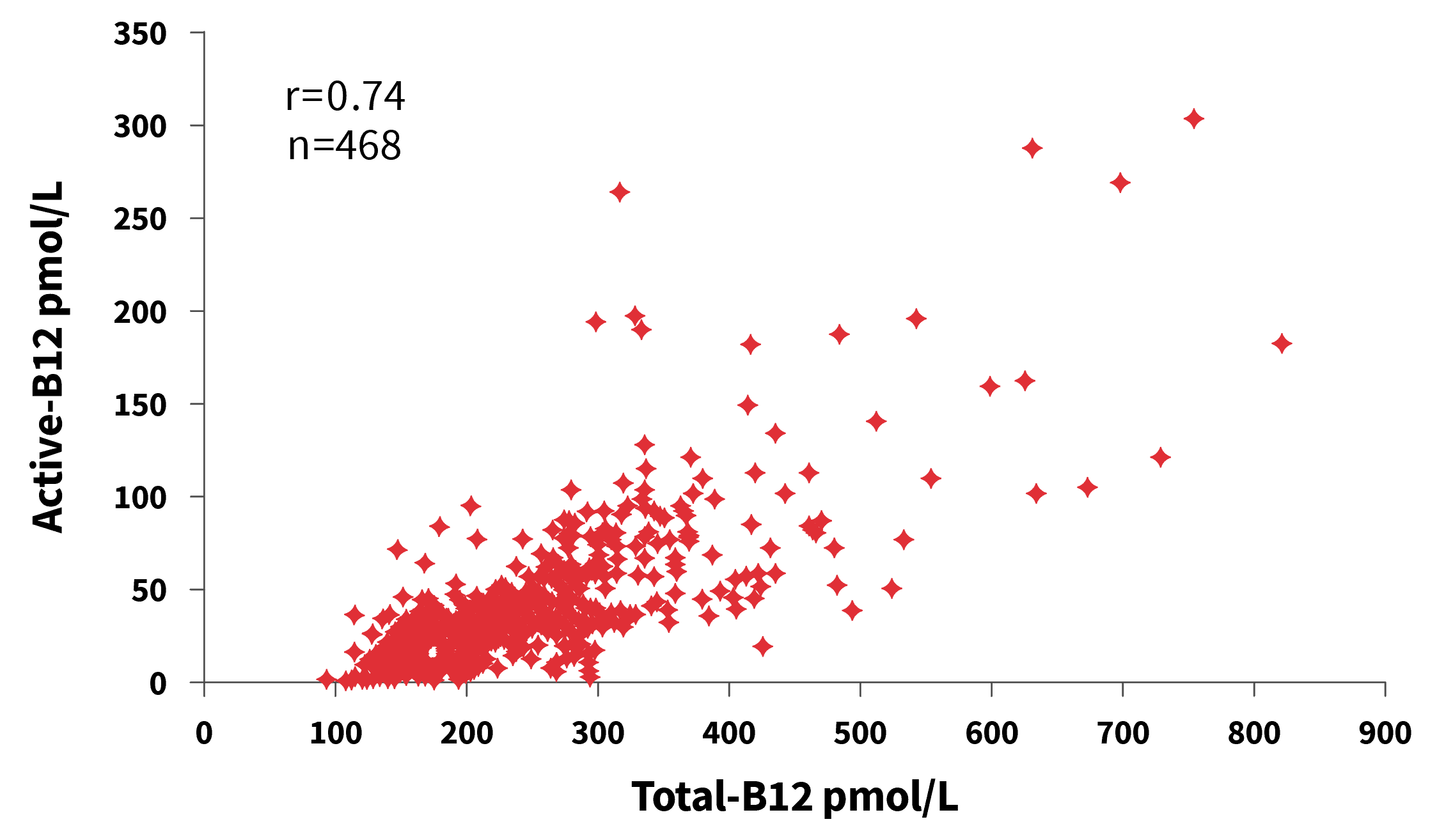
Now, this brings up an argument:
If there’s such a high, positive correlation between total-B12 levels and active-B12 levels, why bother testing for active B12 at all?
Why Test For Active B12?
To answer this question, we’ll have to add two vertical lines to the chart above:
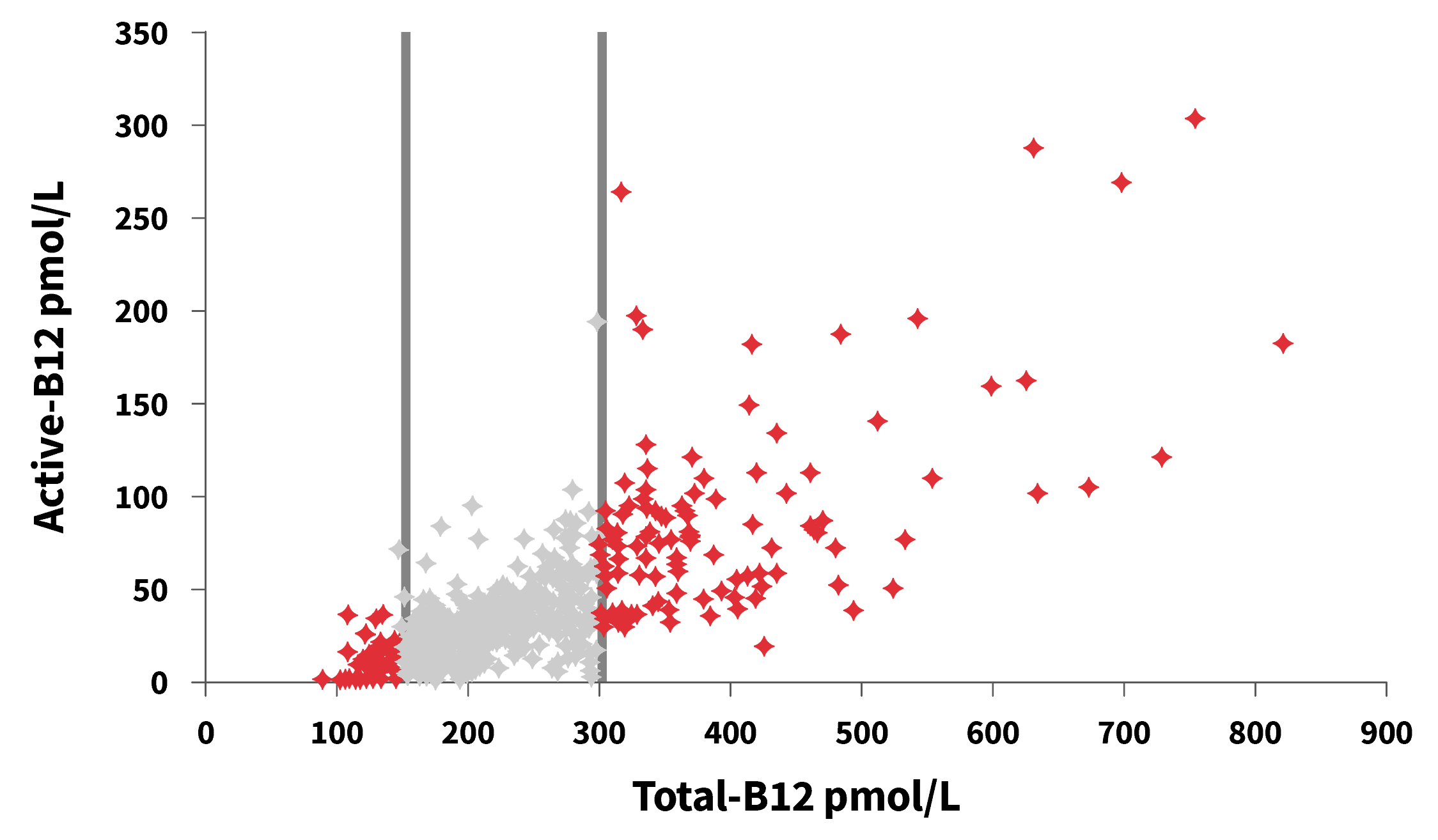
The red dots on the left side represent patients with total-B12 levels of 150 pmol/L or lower. In many countries, this is the cut-off for a positive B12 deficiency diagnosis. The red dots on the right side represent levels of 301 pmol/L or higher, where doctors wouldn’t expect to find B12 deficiency. Now, note the high concentration of gray dots in the middle (314 out of 468 patients). We colored these patients gray, because they have total-B12 levels of 151-300 pmol/L, a range you could describe as the gray zone.
The true vitamin B12 status of patients in this gray range is uncertain. To see what we mean, look at what happens when we add another line to the chart, this time applying a 35 pmol/L cut-off for active-B12 levels, which are indicative of B12 deficiency:
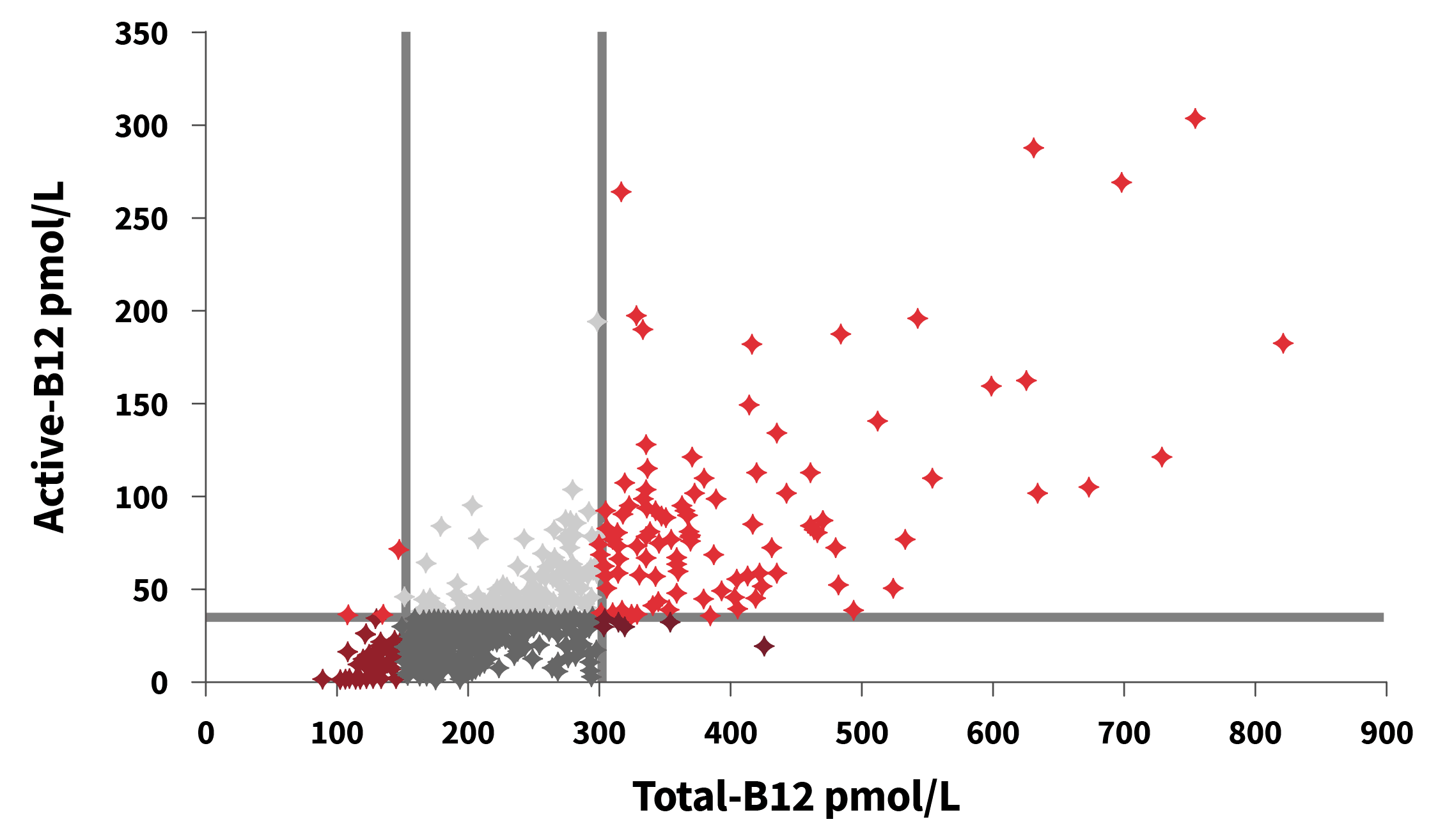
As you can see, many people with “normal B12 levels” of 151-300 pmol/L have low active-B12 levels of 35 pmol/L or less. These patients would have been dismissed by a typical doctor performing the total-B12 blood test, remaining undetected and untreated, whereas an active-B12 test would reveal a likely B12 vitamin deficiency.
It just shows you how unreliable total-B12 levels can be. Active B12 and total B12 tend to agree at the extremes, but most patients exist in the middle range. And so, a large proportion of patients – from 30% to 50%, depending on the population – will have total-B12 levels above the 150 pmol/L cut-off, but with low active-B12 levels.
How Can The HoloTC Test Help?
Resolve Gray-Zone Cases
The active-B12 test can help us resolve uncertain cases where total-B12 levels are in the gray zone of 151-300 pmol/L. This is the most immediate utility we have for it. It will help detect and treat B12 deficiency patients quicker, before damage takes place.

Screen High-Risk Groups In Advance
We could also use the test to screen high-risk people in advance. Active-B12 levels are low in patients with signs of B12 deficiency, as in vegetarians, vegans, populations who consume fewer animal products, and in patients with untreated pernicious anemia.
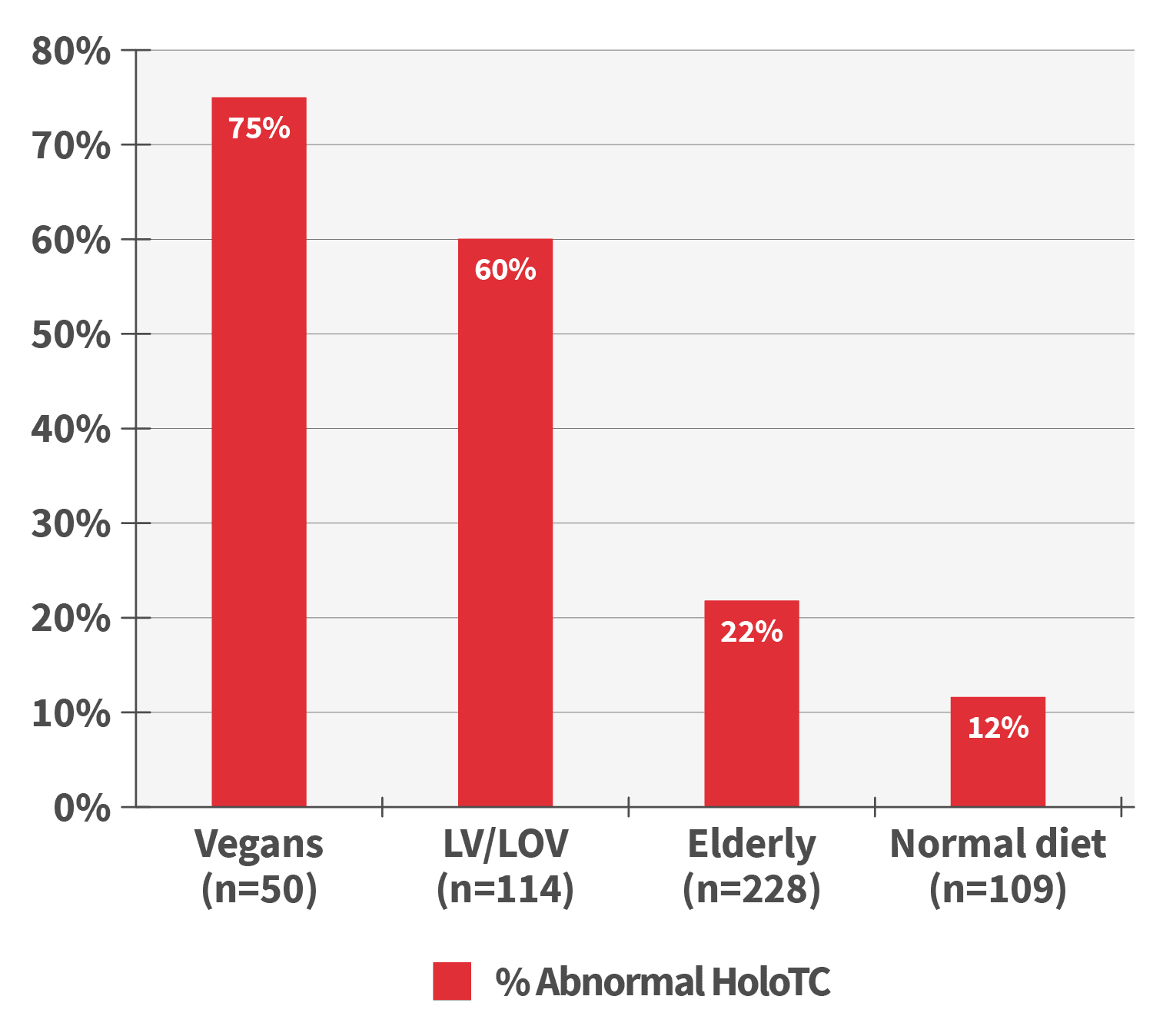
Diagnose B12 Deficiency In Pregnancy More Accurately
With pregnant women, it gets particularly interesting.
One review reported that low total-B12 levels occur in 10-28% of normal pregnancies. Similarly, another study reported that almost 35% of first-trimester pregnancies had total-B12 levels below 150 pmol/L, despite an adequate B12 intake. However, there were no visible signs, and the study found that the drop in total-B12 was a result of declining levels of B12 bound to haptocorrin, and not to transcobalamin (active B12). The authors concluded that the drop reflects normal physiological changes in pregnancy.
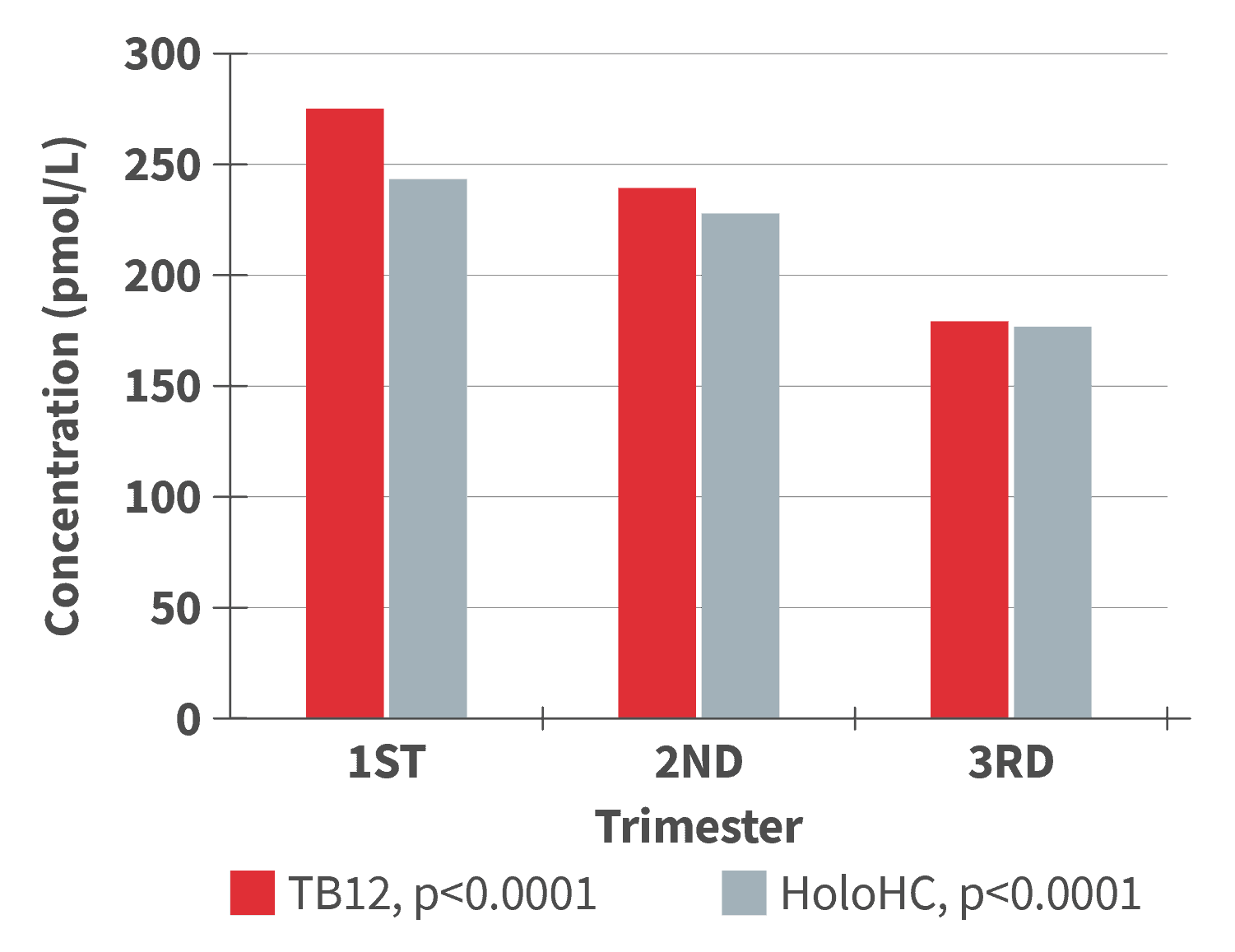
Likewise, another study found an almost 50% drop in total-B12 levels in late pregnancy among healthy, pregnant Danish women. The decline – which by the way, reversed after birth – was not reflected in active-B12 levels. Here again, it was due to declining levels of haptocorrin-bound B12. For that reason, the authors said that the active-B12 test could be used as a more reliable marker for B12 deficiency during pregnancy.
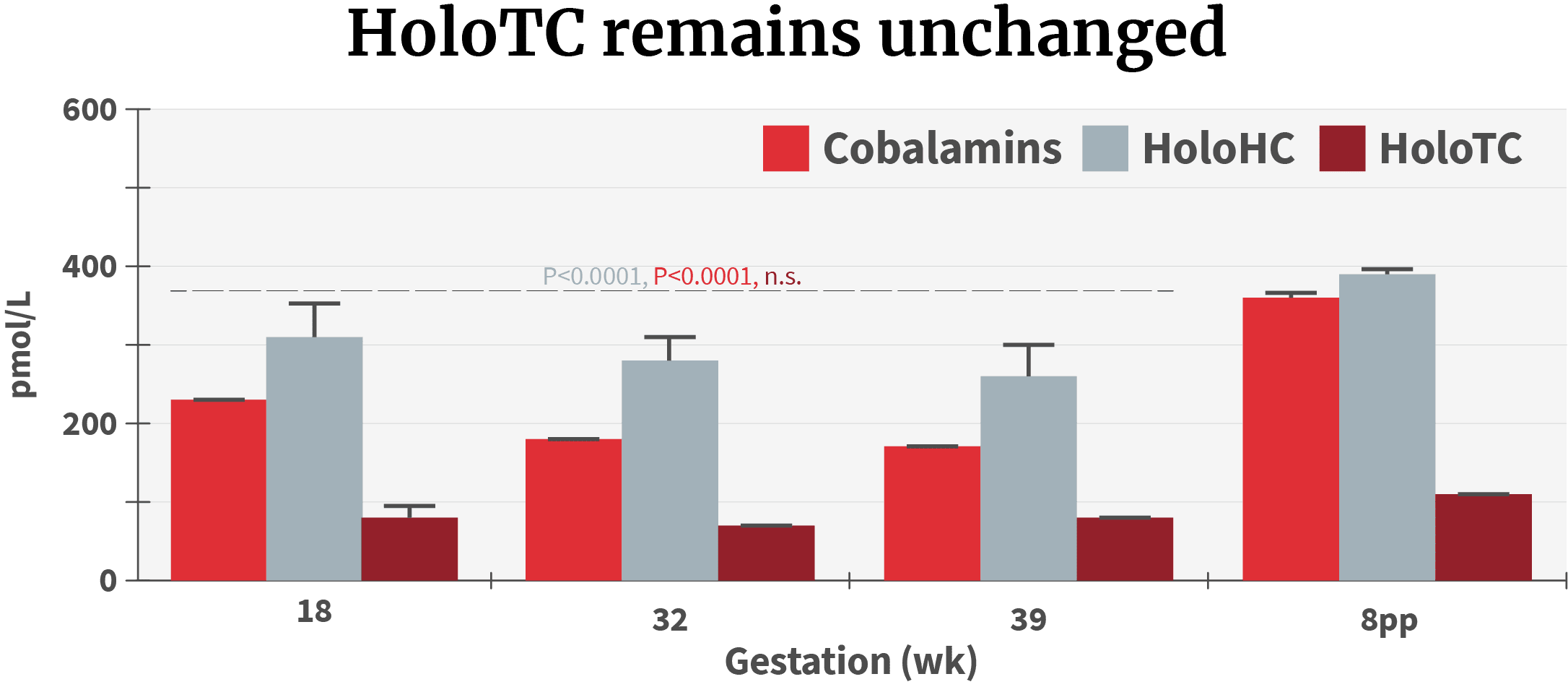
Testing for healthy B12 levels in pregnancy is absolutely crucial – there may even be a link between low B12 levels and the risk of neural tube defects. And so, if we can ensure good levels of holoTC in a mother, we can protect her baby from developmental disasters. This is all the more true when she begins breastfeeding. The earlier we diagnose B12 deficiency in a mother, the sooner we can prevent it in her baby.
Replace The Total-B12 Test Altogether
The goal is to completely replace the total-B12 test, because once the active-B12 test has been performed, total-B12 levels aren’t useful. The diagnostic accuracy of the active-B12 test would remove the need for the total-B12 test, and help diagnose patients faster, preventing what could progress to permanent neurological damage.
It Still Can’t Replace an MMA Test
MMA (methylmalonic acid) is a sensitive indicator of functional B12 deficiency, because MMA accumulates primarily when B12 is absent. The problem with MMA is that impaired kidneys can skew the results. Similarly, the active-B12 test has its own issues.
However, perform the holoTC test together with an MMA test, and you get very robust cross-data for diagnosing a B12 deficiency case correctly. Combining MMA with holoTC tests reduces the chance of misclassification due to false positives or negatives.
What Are Good Levels of HoloTC?
Now that we’ve established that the active-B12 assay is more diagnostically accurate than the total-B12 assay, here are the numbers you should aim for:

The Future of Active-B12 Testing
The total-B12 test is a poor predictor of B12 status, and is prone to false positives and negatives. The active-B12 test is more accurate. If you read our article about all B12 deficiency tests, you’ll see that we recommend to combine the test with a functional test as well – homocysteine or MMA. In particular, testing for both MMA (a functional marker) and holoTC (blood marker) provides a very good picture of true B12 status.
Good luck.